Four Seasons Wind Research Group successfully held the first regular postgraduate meeting in the second half of 2019
On June 18, 2021, all graduate students and staff of the Sijifeng Research Group gathered at 305, Xihuan, China University of Petroleum, and successfully held the first regular postgraduate meeting of the Sijifeng Research Group in the second half of 2021 and the center's business capability demonstration activity.
Li Wenxuan, a graduate student of the research group, shared the document "Characterization of Doped MnO2/Al2O3 Catalyst and Its Application in Microbubble Ozone Degradation of Quinoline", explaining the main methods of catalyst characterization, microbubble reactor and ozone oxidation treatment of quinoline, sharing The table recording method is helpful for the upcoming topic opening and literature review work of Yanyi students.
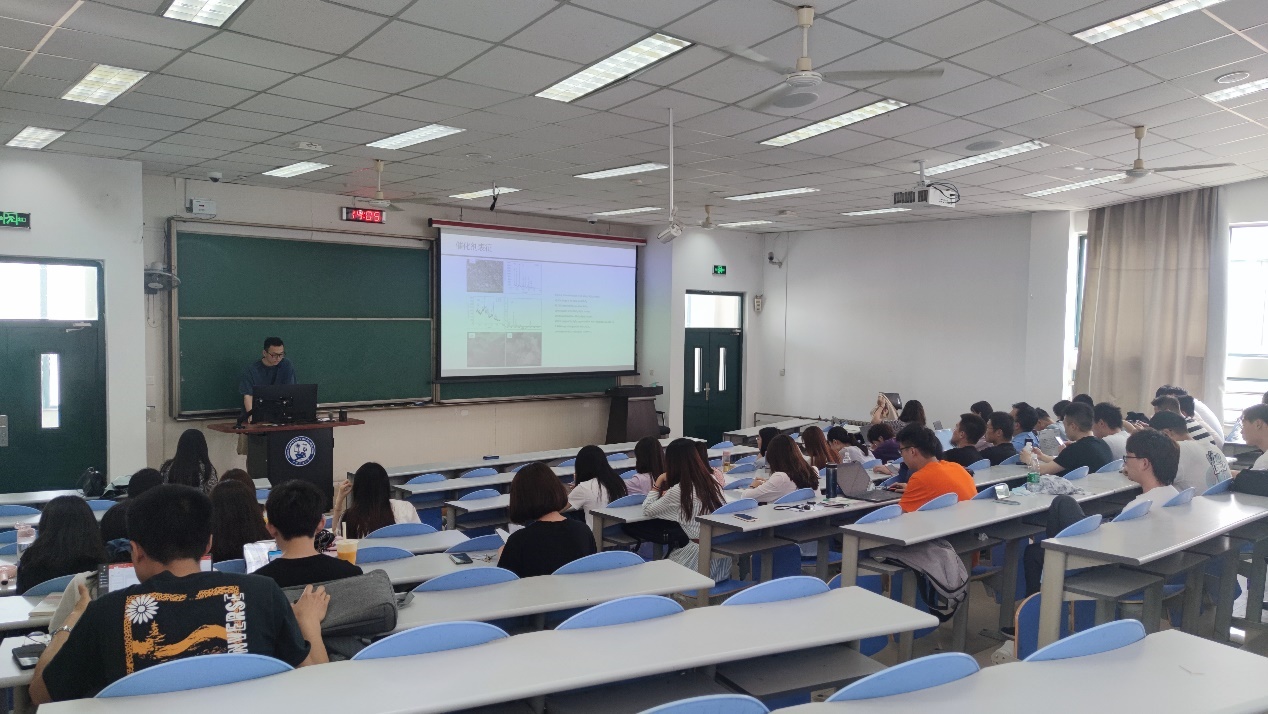
Figure Li Wenxuan of the research group Literature report
In the sharing titled "Laboratory Testing Process and Precautions", Tian Cuifang of Jieqing Testing introduced the principle and composition of the center's experimental equipment, introduced the sampling and testing process of sister in 6 steps, and shared the center laboratory for the students of the research group The experience and some common problems in the use of the instrument help students to better carry out experimental design and experiment.

Figure Jieqing Testing Tian Cuifang "Laboratory Testing Process and Precautions"
The first research student of the research group Gong Jingyu shared the document "Source profiles, emission factors and associated contributions to secondary pollution of volatile organic compounds (VOCs) emitted from a local petroleum refinery in Shandong", combining practice and topics, introduced a Shandong oil refinery Quantification and characterization of emissions of volatile organic compounds.
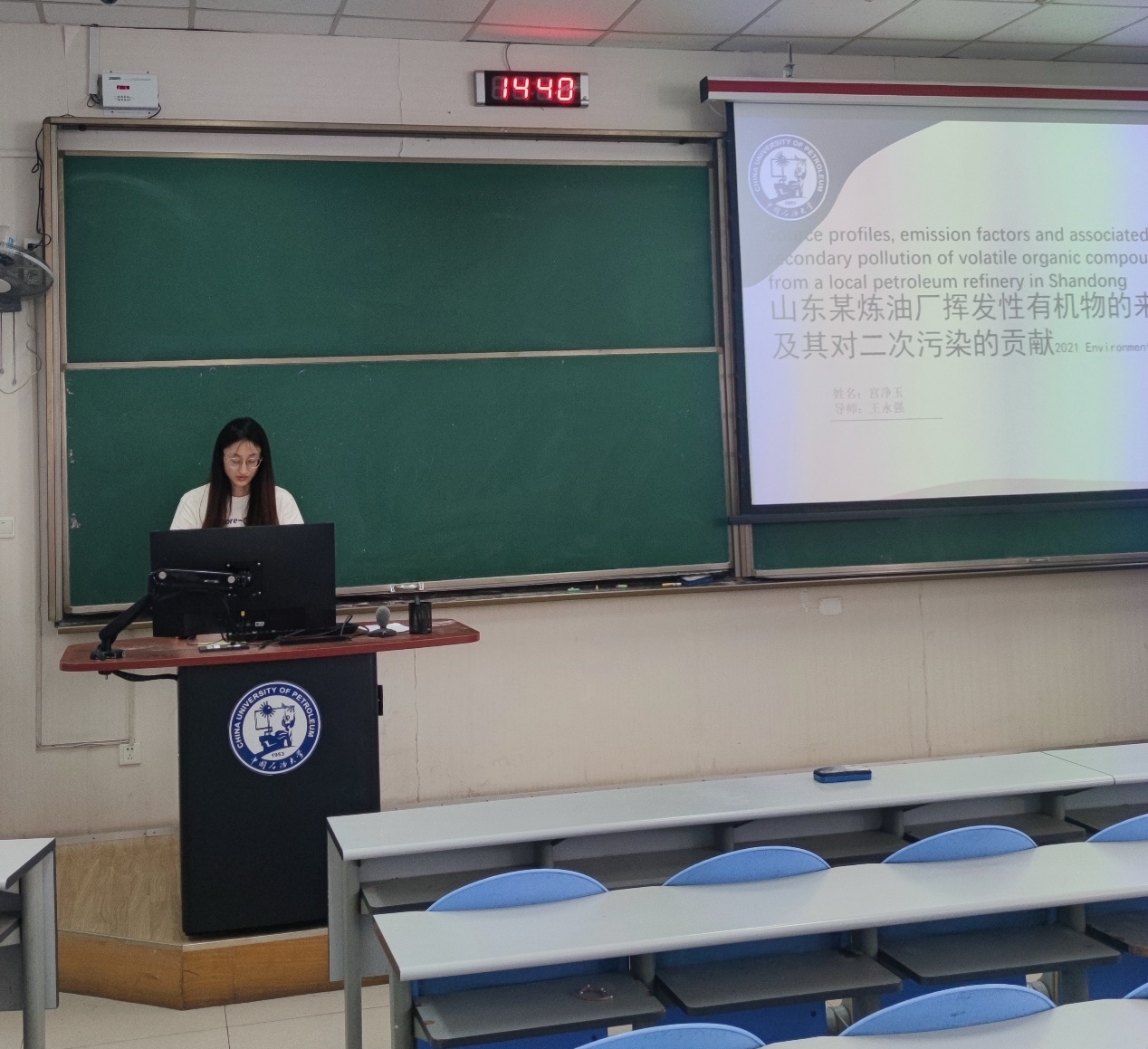
Fig. Gong Jingyu of the research group Literature report
Li Bing of the Ministry of Environmental Technology published HJ2.2-2018 "Environmental Impact Assessment Technical Guidelines for Atmospheric Environment" and GB/T39499-2020 "Recommended Health Protection Distances for Unorganized Emissions of Atmospheric Hazardous Substances" in "Atmospheric Environment Protection Distance & Sanitation Protection Distance" The "Guidelines" analyzes and compares the difference and connection between the atmospheric environment protection distance and the health protection distance, and provides help for the work of the center members and the students of the research group.

Figure Li Bing, Environmental Technology Department, "Atmospheric Environmental Protection Distance & Sanitation Protection Distance"
Wang Yongchuan, a graduate student of the research group, shared the topic of "Introduction to Software Plug-ins", sorted out and analyzed software such as fast file search, standard and normative search, and commonly used Chrome plug-ins, and put forward some suggestions based on his own experience.
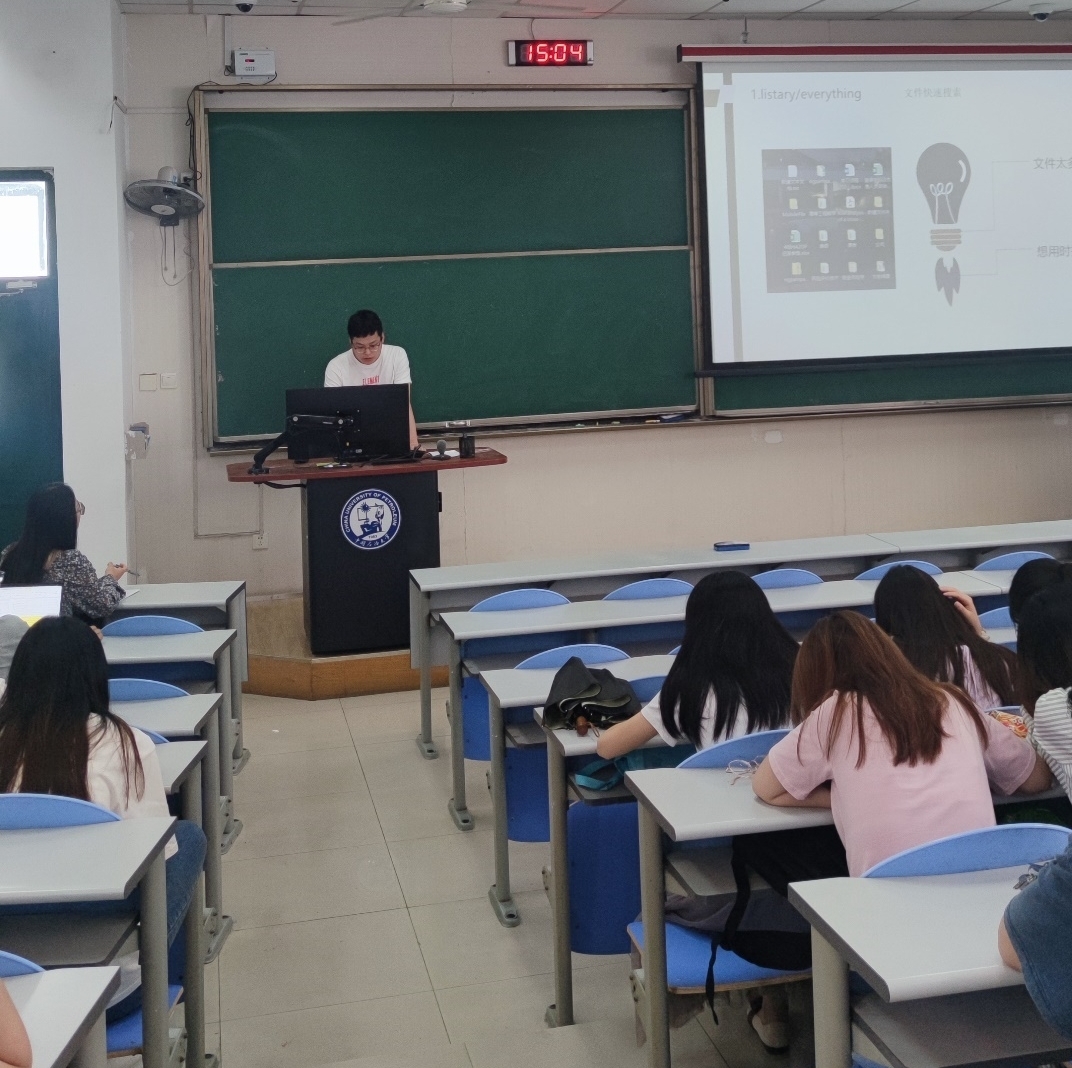
Figure Wang Yongchuan of the research group "Introduction to Software Plug-ins"
Liu Qinglong from the Safety Technology Department gave a detailed explanation from the proposal to the writing of scientific research topics based on his own experience in the "How to propose a topic and write a topic application", which provided help for the center staff and students in the future work and study.
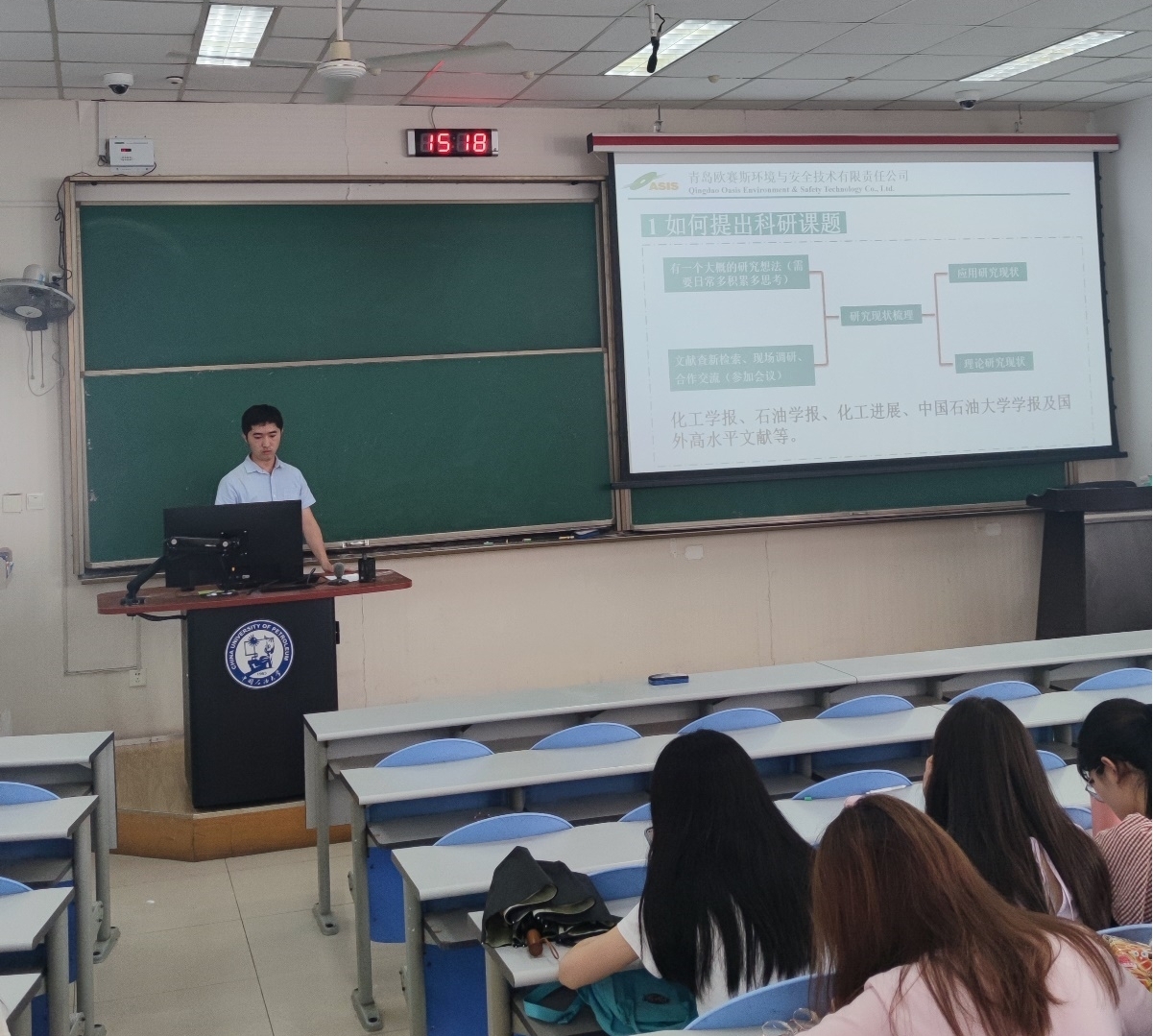
Figure Liu Qinglong, Safety Technology Department "How to propose a project and write a project application"
He Zhongxu, a graduate student of the research group, brought a display titled "Use crawler technology to obtain network information", introduced and compared several commonly used crawler technologies, and provided a time-saving way for the center members and the students of the research group to read the literature. Efficient tool.
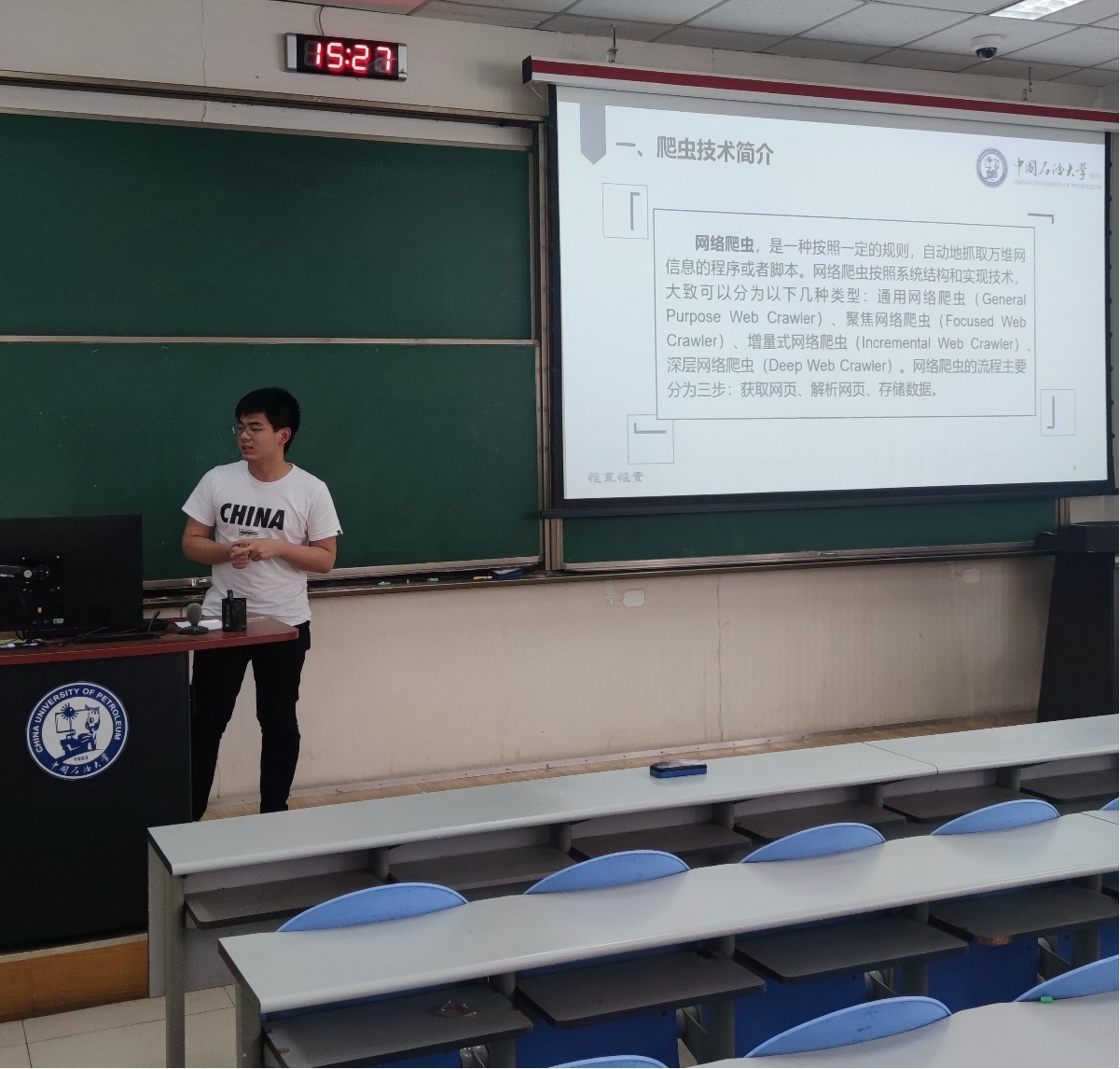
Figure He Zhongxu, the research group, "Use crawler technology to obtain network information"
The successful holding of the regular meeting of graduate students and the demonstration of business ability has strengthened the mutual understanding between the graduate students of the research group and the members of the center, which is conducive to the further cooperation and innovation of each other in the future work and study; at the same time, it also provides an opportunity for the graduate students of the research group. An opportunity to combine the theoretical knowledge learned in the classroom with engineering practice. In the sharing and communication with the members of the center, the graduate students of the research group confirmed what they have learned and improved their professional qualities.
Recommendation
- 2020 year-end summary conference agenda
- Notice of 2019-level oral defense of opening report
- Four Seasons Wind Research Group 2020 Orientation Conference Process
- Notice of the Mid-term Inspection Meeting of the 2018 Graduate Thesis of the Sijifeng Research Group
- 2020 Four Seasons Wind Research Group Alumni Return to School Agenda
- Four Seasons Wind Research Group's 2017 graduate thesis pre-defense arrangement
- 2019 year-end summary conference agenda
- Notice of the 5th Business Capability Demonstration Activity and Regular Meeting of the Research Grou
- Four Seasons Wind Research Group's 2018 graduate thesis opening and defense arrangements
- Notice of the 4th business ability display activity and regular meeting of the research group in 2019
- Fourth China CCPS Process Safety Conference Call for Papers
- [Expert lectures]"Petrochemical industry VOCs pollution investigation work Reading" Management Gu
- Academic Report: Risk Based Process Safety
- 【Academic report】PhD Thesis report high levels of outstanding do
